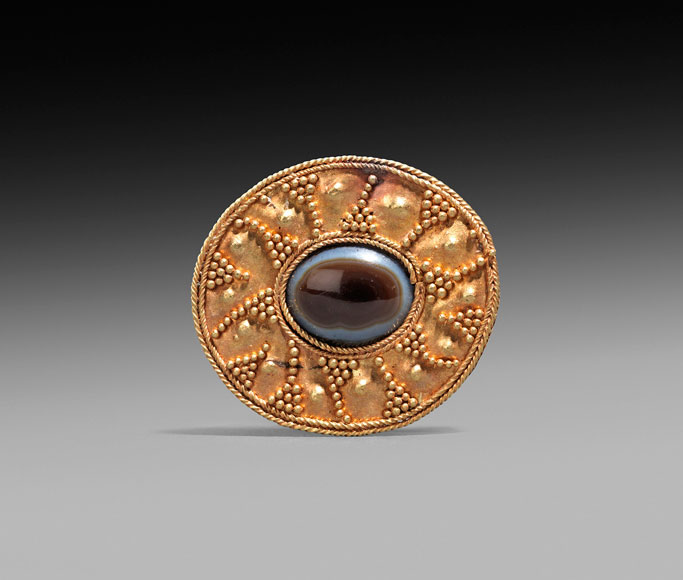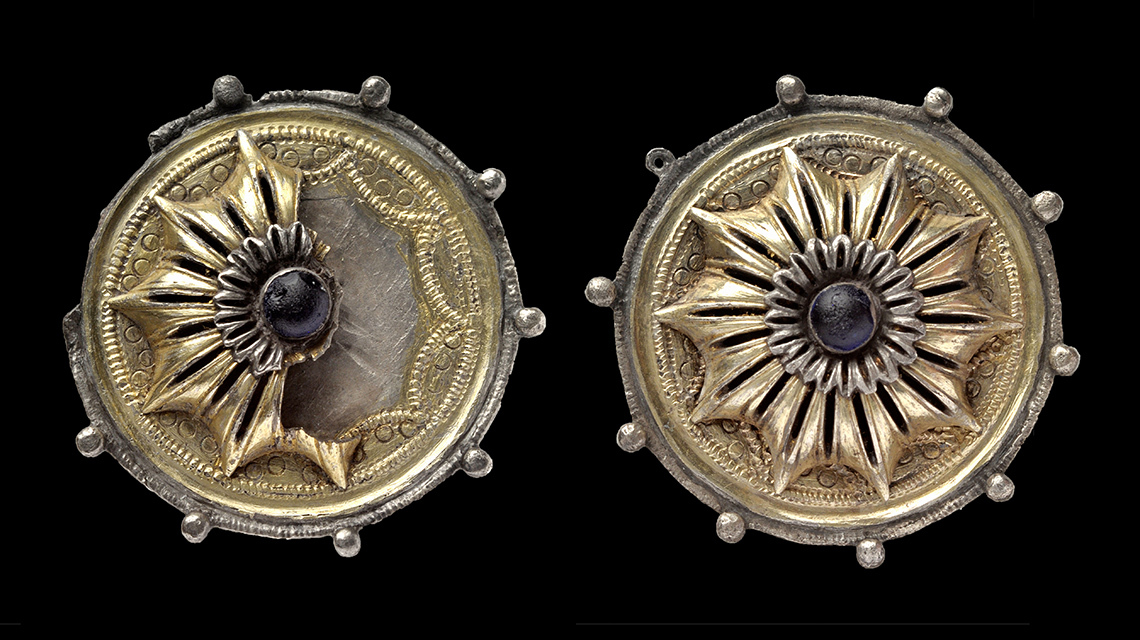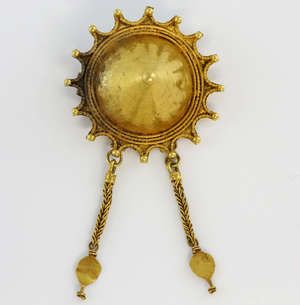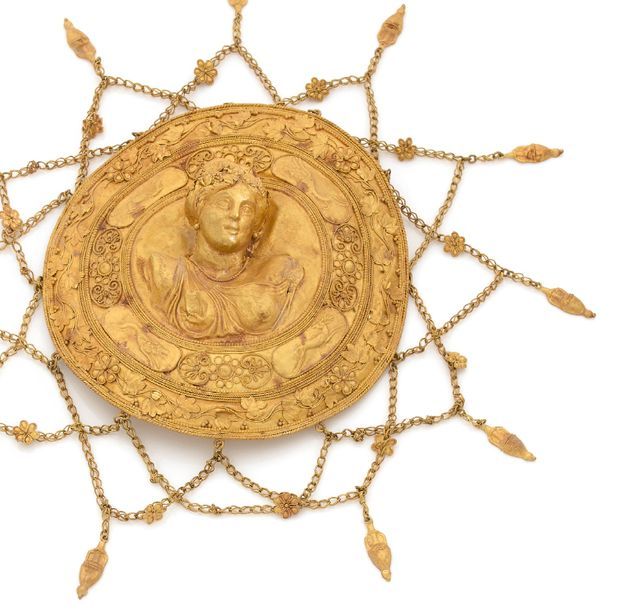Medaljon i drugi nalazi iz groba G-1733 iz Viminaciuma/ CAMEO MEDALLION AND OTHER FINDS FROM GRAVE G-1733 IN VIMINACIUM; Dragana Spasic-Djuric
https://www.academia.edu/4374731/Medaljon_i_drugi_nalazi_iz_groba_G_1733_iz_Viminaciuma_CAMEO_MEDALLION_AND_OTHER_FINDS_FROM_GRAVE_G_1733_IN_VIMINACIUM
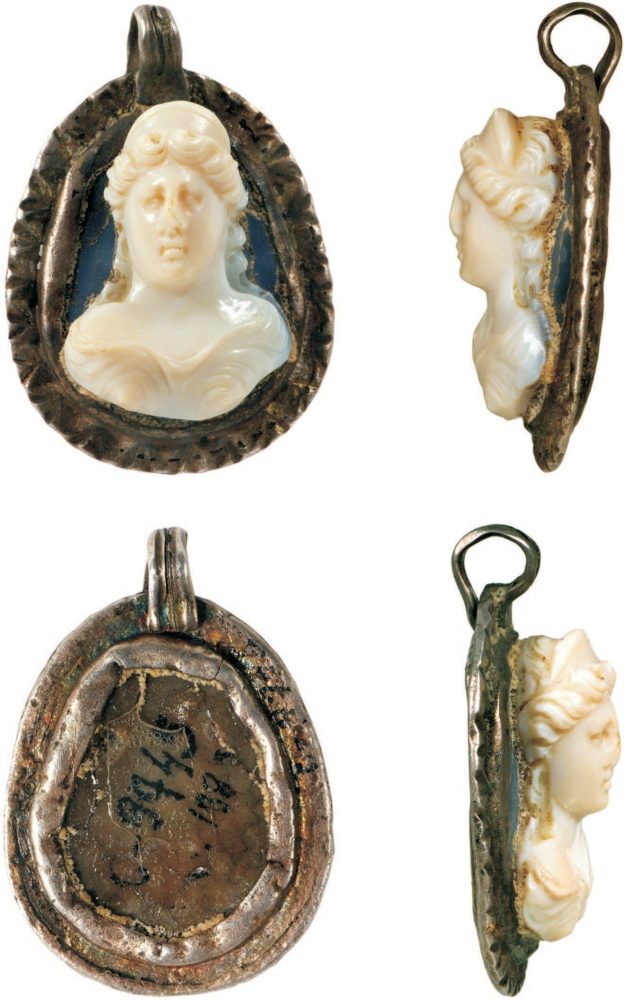
Photo by V. Ilić
A cameo of two-layer, blue-white agate is inserted into the silver cassette.
Cassette dimensions: 3.3 x 2.3 x 0.3 cm;
cameo dimensions: 2.2 x 1.6 x 0.7 cm;
medallion weight 6.3 g
The medallion was found in the burial of a young woman [G-1733] in Viminacium. Among the grave goods were also found: a bracelet of jet beads, an amber pendant, a string of glass beads, silver ring, a bronze coin of Elagabalus from Nicopol. Based on a coin the burial was dated to the 3rd century, found jewelry “is characteristic of the latter 2nd to the early 4th century and was most popular during 3rd century.”
“Judging by the inhumation ritual and the provenance of some of the grave goods, and on the basis of part of the inventory of Eastern-Mediterranean provenance, the grave probably belonged to a person of eastern origin.”
“The medallion is composed of two chronologically different parts: a cameo produced in the mid-1st century, during time of Claudius, and the medallion setting made in the first decades of the 3rd century, in a local workshop. The two-layer agate cameo, made by a court craftsman, most probably represents Antonia Minor as Juno (or Venus Genetrix?) […] This precious item was probably passed down the generations of one or more families, which does not exclude the possibility that, at some point, it may also have been given as a gift, traded or taken as the spoils of war. Finally, in the early 3rd century, removed from its original ideological context, it was reduced, as a medallion, to an item of personal adornment. After the death of the young lady from Viminacium, it appears in a funerary context, as a symbol of the love and grief felt by the living for the dead.”
Additional literature:
- Nakit od gagata iz Viminaciuma i Marguma/Jet Jewelry from Viminacium and Margum/Glasnik SAD 27 (2011); Dragana Spasic-Djuric https://www.academia.edu/6134044/Nakit_od_gagata_iz_Viminaciuma_i_Marguma_Jet_Jewelry_from_Viminacium_and_Margum_Glasnik_SAD_27_2011
- Grad Viminacim; Dragana Spasic-Djuric https://www.academia.edu/13093204/Grad_Viminacim



